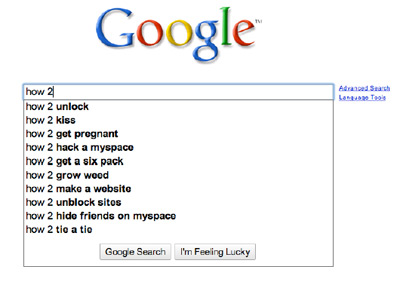 In this article I will show you the most effective way to steal ANY top Google ranking for ANY keyword. As I frequent SeoChat I notice many people asking why they are not achieving top rankings for specific keywords they have been targeting. Many times the answer is quite simple, the webmaster is doing complete on-page optimization while neglecting to do any or at most very little backlink building. Or perhaps the webmaster is trying to take out competitive rankings while building links from web directories or forums. Many times the cases are very similar, while many webmasters really do try to build links very few do it in the right way or stick with it. Even if you get a few good links, that is not the time to stop and hope they will push you over the edge, nay, instead it is time for you to move into over-drive.
In this article I will show you the most effective way to steal ANY top Google ranking for ANY keyword. As I frequent SeoChat I notice many people asking why they are not achieving top rankings for specific keywords they have been targeting. Many times the answer is quite simple, the webmaster is doing complete on-page optimization while neglecting to do any or at most very little backlink building. Or perhaps the webmaster is trying to take out competitive rankings while building links from web directories or forums. Many times the cases are very similar, while many webmasters really do try to build links very few do it in the right way or stick with it. Even if you get a few good links, that is not the time to stop and hope they will push you over the edge, nay, instead it is time for you to move into over-drive.The answer to achieving that coveted ranking is actually very very simple, the only question I have is, are you dedicated to REALLY taking on that competitive keyword? – if so then lets get started, lets learn the TRUE secret to stealing ANY top Google ranking… are you ready?
When I share this secret with you, you will ultimately do one of two things… you will either say “ohhh that makes sense” and you will begin to implement it into your SEO campaign or else you will assume its either too easy or too hard (likely the latter) and move on. The truth is that in some cases it is very very easy and other times it is quite hard, but if you stick with it and follow this method completely through it will work.
A few years ago I was working on a site for a retailer, I was using my typical link building techniques and was making progress however I learned something through that campaign that reshaped how I do SEO. I discovered that the owners of the websites where friends with numerous people who owned the top positions for the keywords they were targeting. So I thought to myself, if I can get links from all these sites I can take out the top position and hold it easily. So I set out to do this and, belive it or not, it was actually very easy to do, I was able to take out the positions they desired and firmly place them in control of many rankings which they have ever since effortlessly held.
Perhaps your puzzled and wondering what I actually did. Well it is very simple, I decided which rankings we were targeting primarily, I then went to each webmaster on the first (sometime the second) page of Google for that term and found a way to get a link from them. Some of these sites were provided products by my client so I was able to use this to get a link, I used other methods to get the remaining links. It really doesn’t matter how you get them, you can request them politely (does still work), you could offer to pay for the links or you could use my first method… we will discuss each of these methods in detail.
I want to move through each of these methods step-by-step and give you an idea how to handle each request you will make, if you focus EVERY ounce of your link building energy to using this method you will achieve that coveted ranking, I have not found one case where it didn’t work. But it takes dedication… like ANY real SEO achievments will.
So here are the methods:
#1. One hand washes the other
The goal using this method is either to use something you are doing for the webmaster to get a link or to create a situation where they are obligated to give you a link or at least feel like they are. This can be as simple as you providing the webmaster with leads, this is a excellent way of getting a link and is how I got some of the links for the aforementioned client’s site. It may be providing the webmaster with a bit of exposure in a way your business would have an advantage. This has to be adapted to the specific niche your in, you will need to think this out for each site… believe me though, it is well worth it to spend the time for each of the first page sites. These links are worth their weight in gold.
If the webmaster y0ur attempting to get a link from does not really owe you anything or even worse doesn’t even know you then you may have to “buy” your way to getting that link… and I don’t necessarily mean monetarily.
#2. Linkbait – they’ll swallow it hook line and sinker
I firmly believe that there is a way to get a link from nearly every authority site, however that is easier said then done… however I recommend you atleast look into finding ways of link baiting for specific sites or groups of sites which you desire a link from. You will have to research what will effectively bait a site. It may be a tool, generally a tool, if correctly developed will generate hundreds if not thousands of links however one or two links from first page ranked sites may be worth numbers of regular links to that tool. So make sure you specifically use link bait to get links from high ranked sites, don’t just hope that they will see it and link on their own.
An article is also very good link bait, I have done numerous research articles and these can turn into powerful link baits. If you do your research thoroughly this can prove to be a super valuable link bait development method. But again, remember to target your article to the specific sites you want a link from. If you can get those links, all other links your article might attract is just the icing on the cake.
#3. Simply request a link
Sometimes the obvious answer is the right answer… just asking for a link can sometimes get you that link. But sometimes you have to pay for the link. Whether its a set fee for a “permanent” link or a monthly agreement it does entail risks. I do NOT recommend link exchange at all, instead if you have linked to a site and desire a link back from them, I recommend you email them in a way that in NO WAY even hints at the fact that you have linked to them or at all smells like a typical link exchange request. Find a way of buttering the recipient up, comment on an article they have written, provide a honest and detailed testimonial of a software they sell etc. These are much more successful attempts at gaining a link back and are much more “natural” to Google. No need to tell them you linked to them, if the link is worth anything they will notice… if not what makes you think they will be impressed because you inform them of it? I’d be insulted…
Whatever you do to get these links, you should never ever spam webmasters in any way, if they have do-follow open comments or a forum, do not use this to spam for a link. The link you do get, should the webmaster not remove it, will be worth far less than a naturally placed link on a quality relevant page by the webmaster. I can’t overstress the utter worthlessness and waste of time it is to try and spam for links.
Perhaps you had hoped for some pill or miracle drug which would give you super SEO powers but if this article has seemed a let down in anyway you need to re-read it and seriously consider using these methods. I use these methods all the time and it has turned out to be the best way to start my SEO campaigns. I have kept it simple because the method is simple, whoever said SEO was rocket science anyways?
Obviously there are certain niches where this method would be hard and in such cases you will need to continue beyond just trying to get links from the first page for your primary keywords, because in some niches many of the first page-ranked sites will not even link to you… you should ultimately go after every site ranked in Google for the keywords you are trying to rank for. If you actively proceed with this method you will ultimately rank for the terms you desire… but again this is no miracle work. Like all the methods I use and recommend, they take time and patience however the results are well worth it.
The purpose of this article is to help you realize that you should be getting links from people who are holding positions in territory you want to hold, then keep moving back through the rankings trying to get links. Don’t worry if they are ranked on the 10th page, if the term is competitive they will still be a valuable linkback.
As always comments and emails are welcome, and of course we love to have you link directly to our articles. If you enjoyed this article please add my blog to your feed reader… if you do not have a feed reader, please join the 21st century. Goto Google.com/reader and start by adding www.1stsearchenginerankings.com to the list. That way you have instant access to new articles as soon as they are published. Thanks again for reading!
Sponsor: Mini Solar lights



